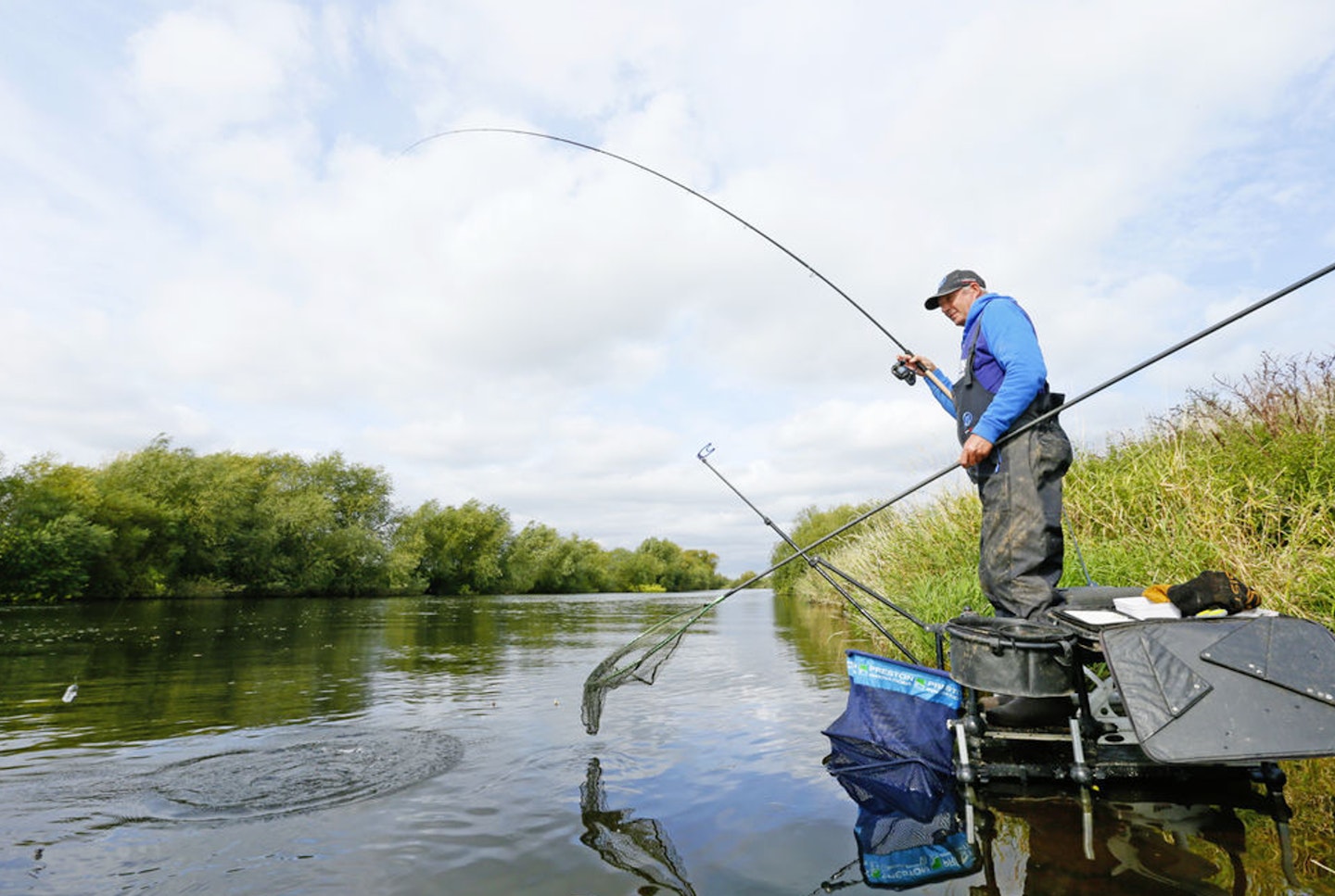When feeder fishing on commercials you’ll cast out, tighten up the slack and then put the rod on the rests to wait for the tip to wrap round.
If you do this when fishing on a river, you’re asking for trouble. The bites can be ferocious, and before you’ve even picked up the rod you could have been snapped off. But there’s a simple way of eradicating this problem.
Your rig needs to act naturally in order to get plenty of bites, so you need a feeder that holds bottom in the current, yet isn’t overly heavy for the situation. In other words, use the lightest feeder you can get away with. In typical summer flows, this will mean using a feeder weighing between 30g and 60g.
Many anglers opt for open-end feeders crammed with groundbait and pellets when targeting barbel and chub, and if there’s a bit of colour in the water this is a decent choice. However, in low, clear conditions, hemp and casters can be a far better bet. Feed out a big bow of line after you cast out to help the feeder hold station, and you’re good to go!
ALWAYS SELECT THE BEST BAITS FOR RIVER FISHING WITH OUR EXPERT GUIDE.
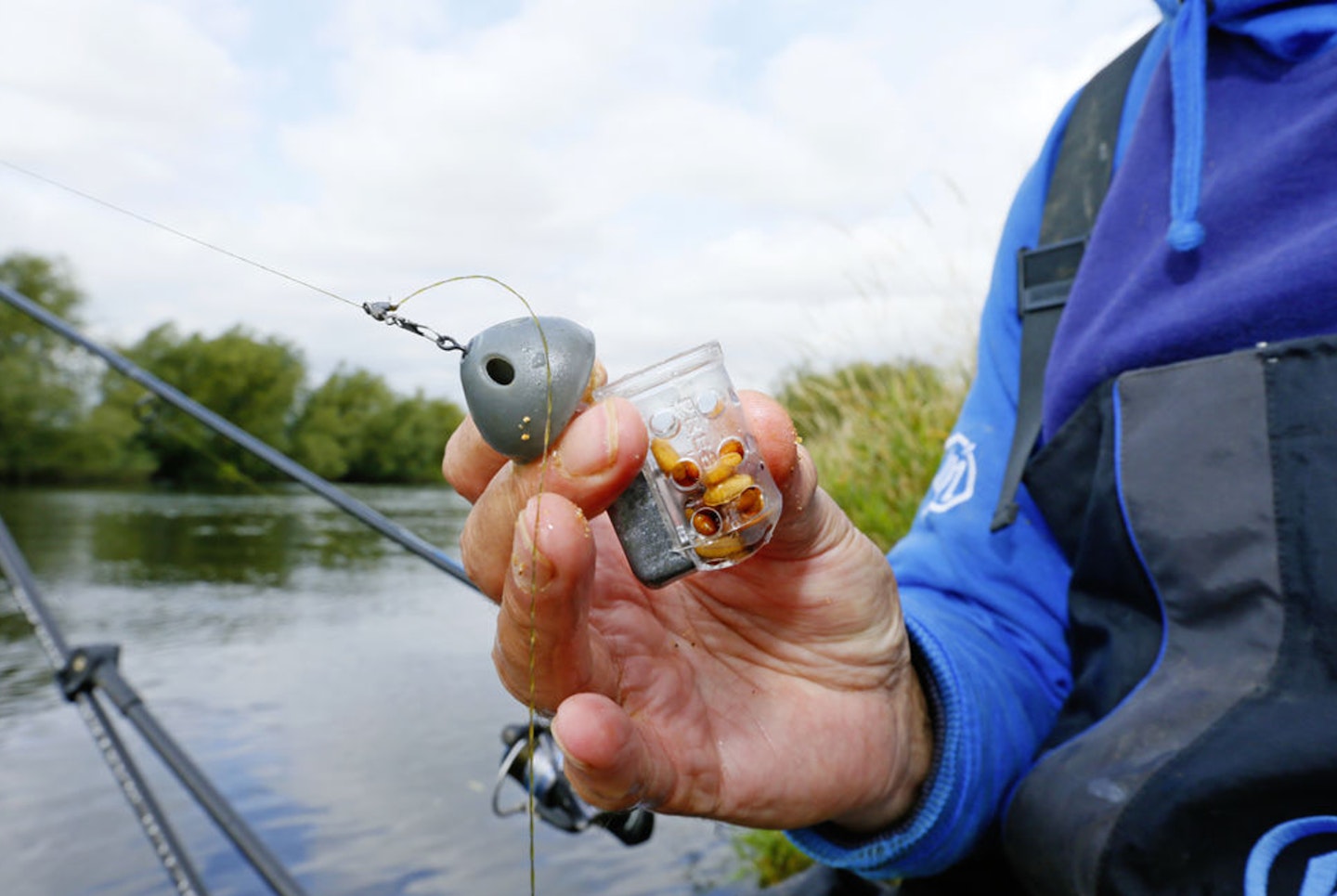
Cast out
Cast out slightly downstream and keep the rod high until you feel the feeder hit the bottom of the river. If it goes down with a solid thud, you are on the gravel or clay, and this will give you the best presentation and chance of a bite. If the feeder hits bottom gently or you feel nothing at all, it is likely you are in a weedbed and should recast.
NEED A NEW REEL? CHECK OUT OUR GUIDE TO THE BEST BARBEL FISHING REELS AVAILABLE.
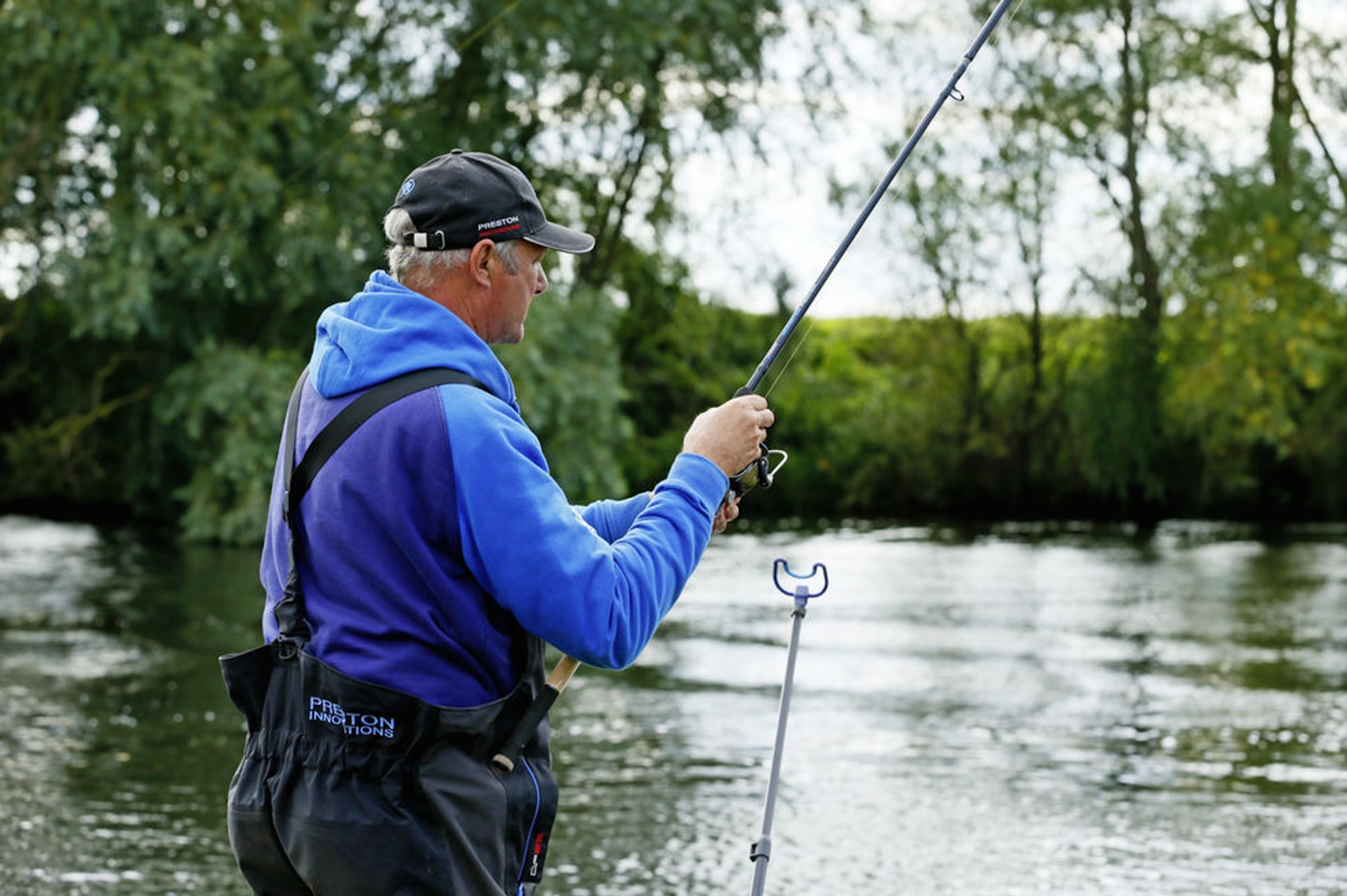
Pause
Next, allow 4m-5m of line to peel off the reel. The current picks up the line and tightens up to form a cushioning bow. The amount of line you pay out will vary with conditions and flow rates so keep paying a little line out until your feeder holds comfortably, if it still won't hold with a decent bow of line, opt for a heavier feeder.
CATCHING CHUB ON THE RIVER REQUIRES THE RIGHT GEAR, OUR GUIDE TO THE BEST CHUB RODS WILL GUIDE YOU IN THE RIGHT DIRECTION.
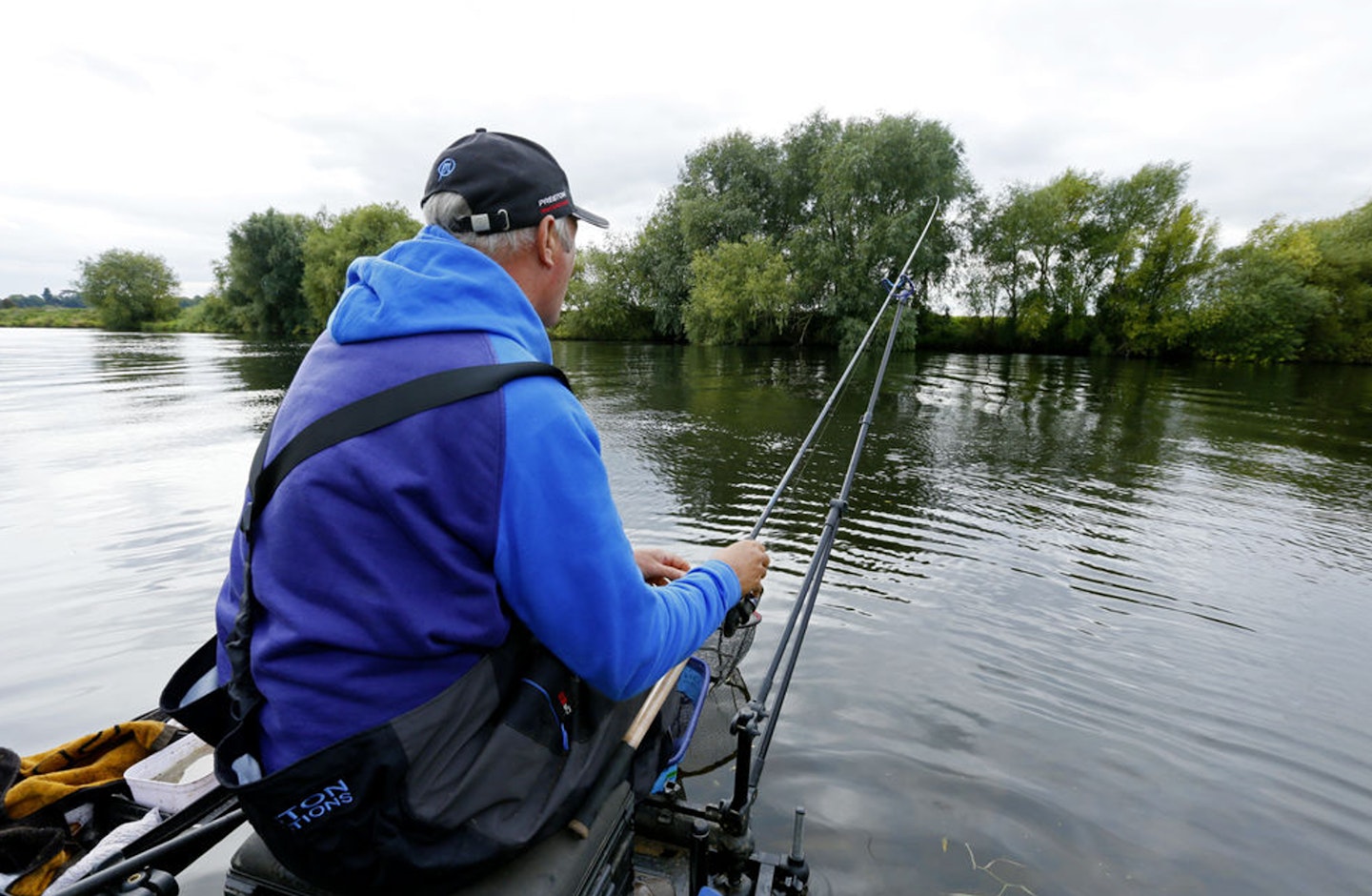
Watch
With a bow in the line you’re likely to get a dink before the tip drops back as the feeder is dislodged by the biting fish. You may be used to seeing bites with the tip pulling towards the water but very often when fishing this way, if the rod tip drops back and your line goes slack, that is your bite!
USING THE CORRECT LINE IS ALWAYS BENEFICIAL, CHECK OUT OUR GUIDE TO BEST MAINLINES.
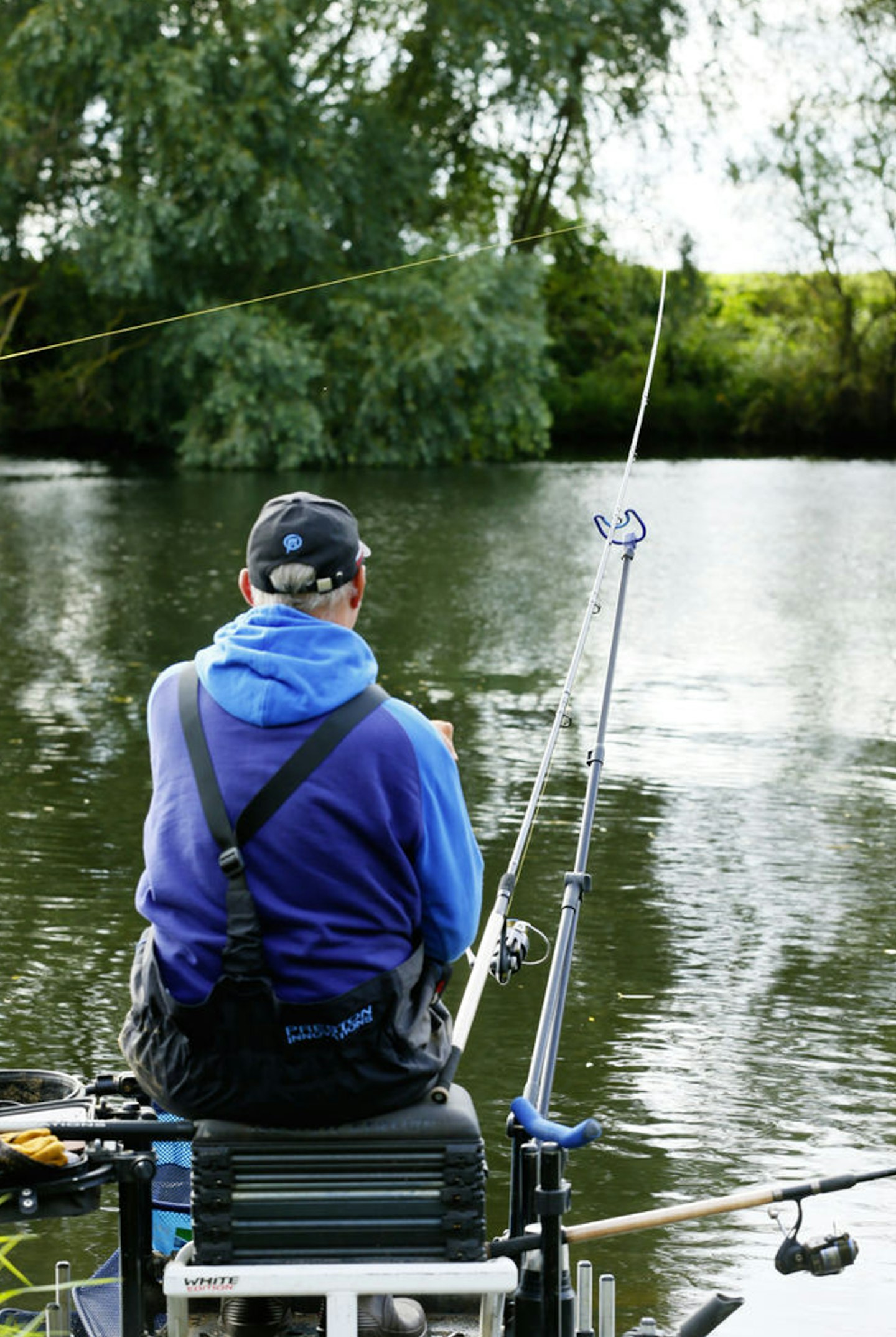
Lift and play
Once you get your indication, pick the rod up and start reeling to commence the battle! There’s no need to strike hard as generally the fish will already have been hooked thanks to the tension in the bow of line when it dislodged the feeder.
ON A BUDGET? THERE ARE SOME EXCELLENT FREE STRETCHES TO FISH ON THE RIVER.
